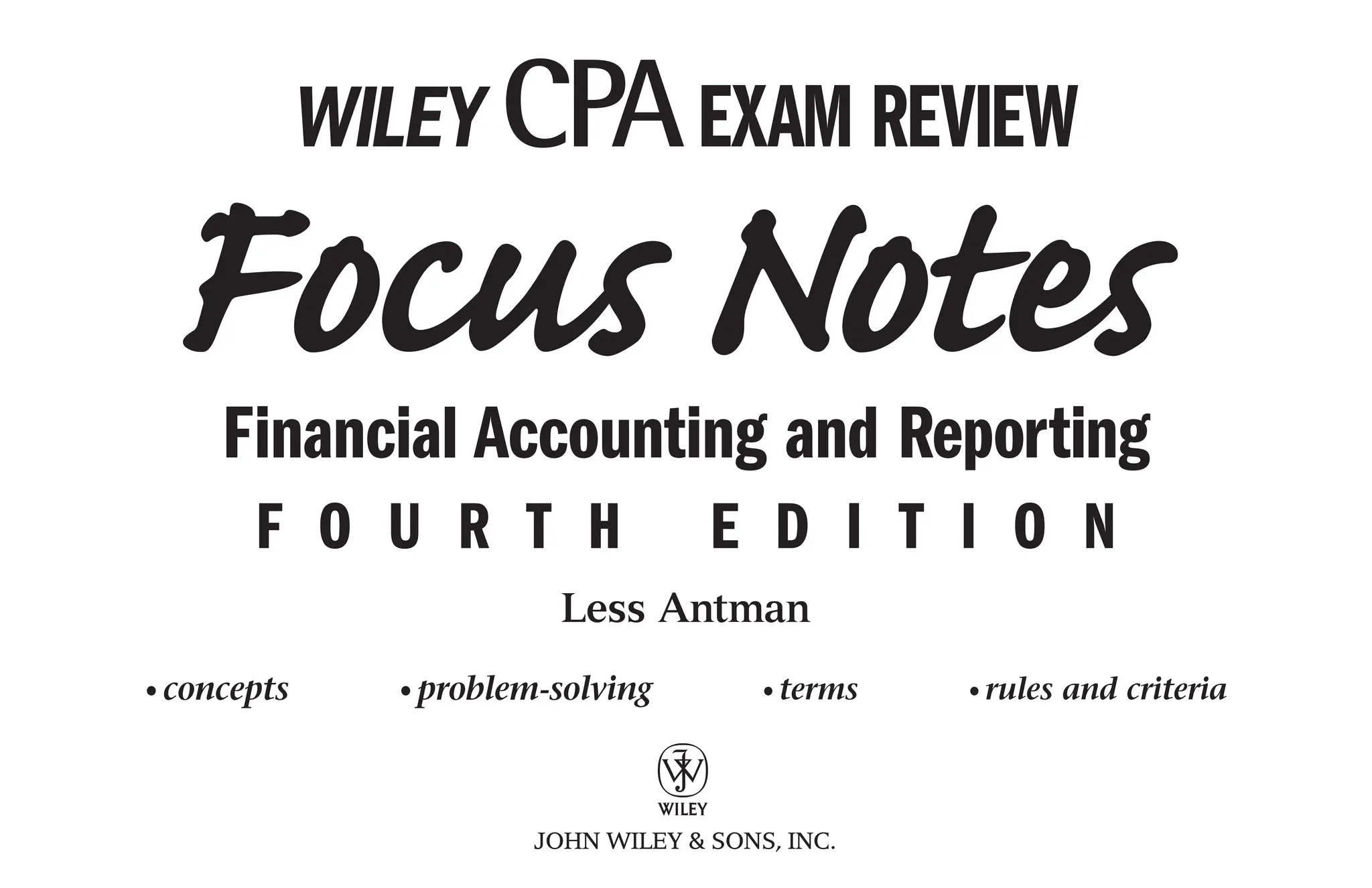This document is a comprehensive study program for financial accounting and reporting, specifically designed to aid individuals preparing for the CPA exam. It includes relevant concepts, problem-solving techniques, and strategies to enhance exam performance, featuring simplified explanations of complex topics and practical tools such as acronyms, formulas, and outlines. Additionally, author Less Antman, a veteran CPA trainer, consolidates essential information necessary for passing the CPA exam along with focusing on key financial statement elements and accounting principles.

















































































































































































































































































